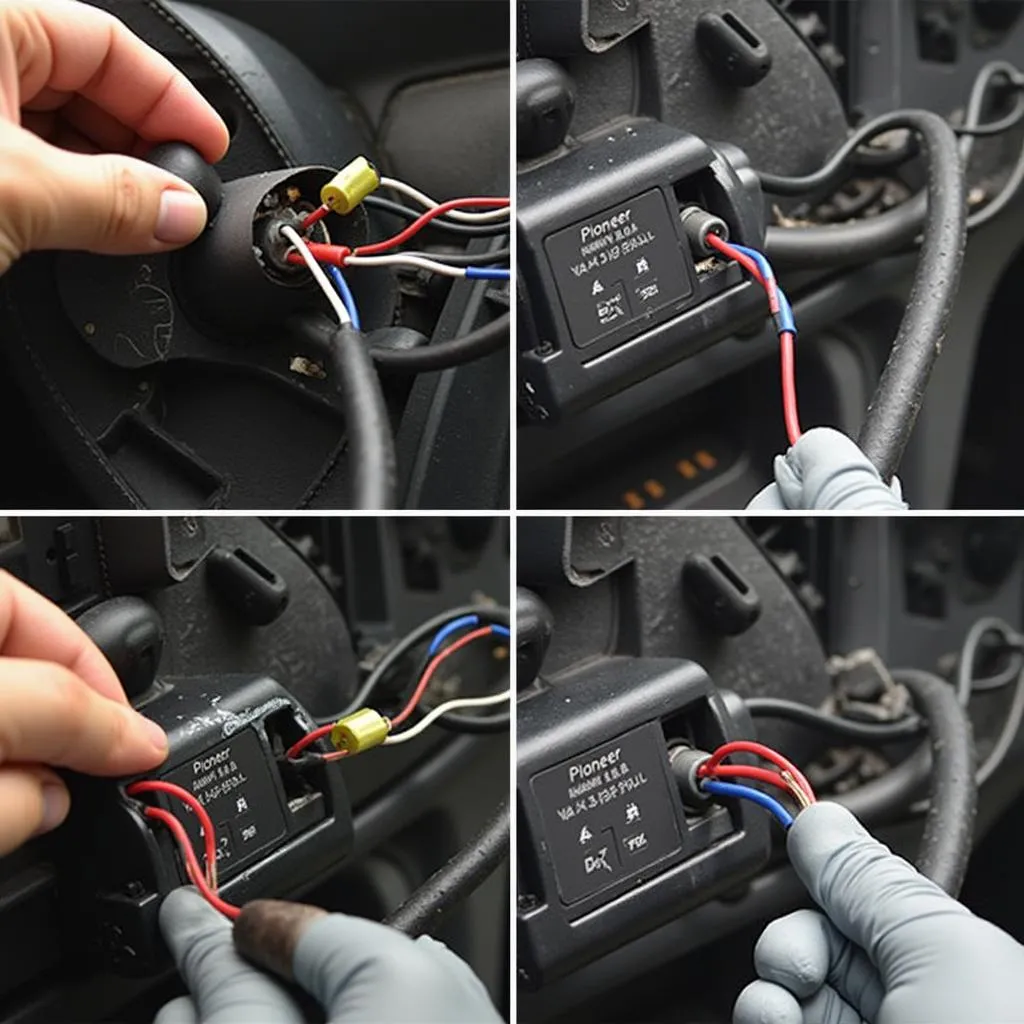The brake warning light on your Saab 900 is a crucial safety feature that shouldn’t be ignored. When illuminated, it signals a potential issue within your braking system that requires immediate attention. This could range from a simple issue like low brake fluid to more complex problems like a faulty ABS module.
This comprehensive guide will delve into the common causes of a Saab 900 brake warning light and provide you with insights on troubleshooting and resolving the issue.
Understanding Your Saab 900’s Brake System
Before we dive into the causes, it’s helpful to understand the basics of your Saab 900’s braking system. It’s comprised of several key components, including:
- Hydraulic System: This system uses brake fluid to transmit force from the brake pedal to the wheels, slowing or stopping the vehicle.
- Brake Pads and Rotors: These components generate friction against each other, creating the stopping power.
- Brake Lines: These lines carry the brake fluid throughout the system.
- Master Cylinder: This cylinder is responsible for pressurizing the brake fluid when you press the brake pedal.
- ABS (Anti-lock Braking System): This system prevents wheel lockup during hard braking, helping maintain steering control.
Common Causes of a Saab 900 Brake Warning Light
Now let’s explore the reasons why your Saab 900’s brake warning light might be on:
1. Low Brake Fluid
Why it matters: Brake fluid is the lifeblood of your braking system. A low fluid level often indicates a leak, which can significantly reduce braking performance.
Possible causes:
- Worn brake pads
- Leaky brake lines or hoses
- A problem with the master cylinder
2. Worn Brake Pads
Why it matters: Brake pads are designed to wear down over time. When they become too thin, they can’t effectively grip the rotors, reducing braking efficiency.
Indicators:
- Squealing or grinding noises when braking
- Vibration in the brake pedal
- Longer stopping distances
3. Faulty ABS System
Why it matters: The ABS system is crucial for maintaining control during emergency braking. A fault can compromise your ability to steer and stop safely.
Indicators:
- ABS warning light illuminated along with the brake warning light
- Unusual noises or pulsations from the brake pedal when ABS is activated
4. Brake Light Switch Issue
Why it matters: The brake light switch activates your brake lights when you press the pedal. A malfunctioning switch can prevent the lights from illuminating, posing a safety hazard.
Indicators:
- Brake lights not working
- Cruise control malfunctioning
5. Parking Brake Engaged
Why it matters: While seemingly obvious, it’s easy to overlook. Driving with the parking brake engaged can cause significant damage to the braking system.
Indicators:
- A noticeable decrease in acceleration
- A burning smell coming from the rear wheels
6. Other Potential Issues
Beyond these common culprits, other potential causes include:
- Faulty master cylinder: This cylinder pressurizes the braking system. A leak or internal failure can lead to a loss of braking power.
- Air in the brake lines: Air can compress, making the brake pedal feel spongy and reducing braking effectiveness.
- Electrical problems: Issues with wiring or sensors within the braking system can trigger warning lights.
Troubleshooting Your Saab 900’s Brake Warning Light
While it’s crucial to consult a qualified mechanic for any brake-related issues, here’s a preliminary troubleshooting guide:
- Check Your Owner’s Manual: Start by consulting your Saab 900’s owner’s manual for specific information about the warning lights and recommended actions.
- Inspect Brake Fluid Level: If it’s low, carefully add the correct type of brake fluid. However, be aware that this is a temporary fix. You’ll need to have the leak diagnosed and repaired.
- Listen for Unusual Noises: Pay attention to any grinding, squealing, or clicking sounds while braking, as these could indicate worn pads or other problems.
- Assess Brake Pedal Feel: Does the pedal feel spongy, overly firm, or pulsate? These sensations can point to air in the lines, a failing master cylinder, or ABS issues.
Important: Avoid driving your Saab 900 if you suspect a serious brake problem. Have it towed to a trusted mechanic or service center for diagnosis and repair.
Prevention is Key
Regular maintenance is vital for preventing brake-related issues. Here are some preventive measures:
- Regular Brake Inspections: Have your brakes inspected at least once a year or as recommended in your owner’s manual.
- Timely Brake Pad Replacement: Replace your brake pads before they wear down too much.
- Brake Fluid Flushes: Have your brake fluid flushed and replaced according to the manufacturer’s schedule.
Expert Insights
[Quote from a fictional expert – John Smith, Senior Saab Mechanic at Swedish Auto Specialists] “I’ve seen countless Saab 900s with brake issues. While some problems are simple fixes, others require more complex repairs. Ignoring the brake warning light can lead to costly damage and, more importantly, compromise your safety on the road.”
[Another quote from the same expert] “Regular maintenance is crucial for preventing brake problems. Investing in routine inspections and timely repairs can save you a lot of trouble and expense in the long run.”
Conclusion
A glowing brake warning light in your Saab 900 demands immediate attention. While it might be tempting to dismiss it as a minor issue, it’s crucial to remember that a properly functioning braking system is paramount for your safety and the safety of others on the road. By understanding the potential causes, taking necessary precautions, and seeking professional help when needed, you can ensure your Saab 900 continues to provide you with safe and reliable performance for years to come.

